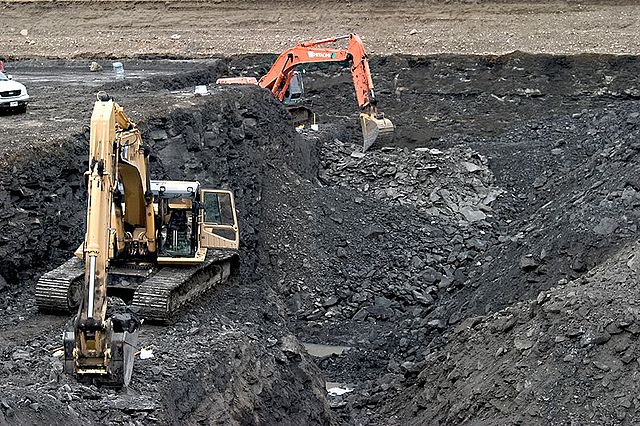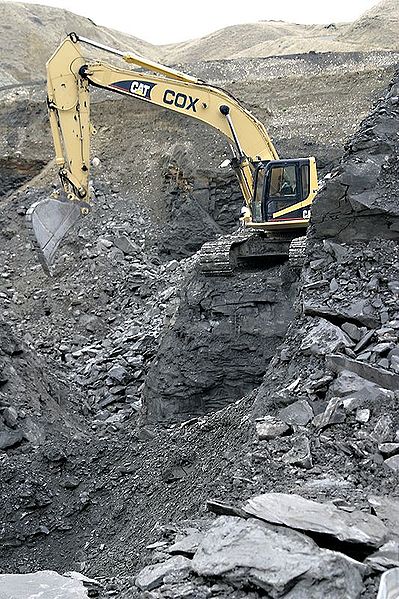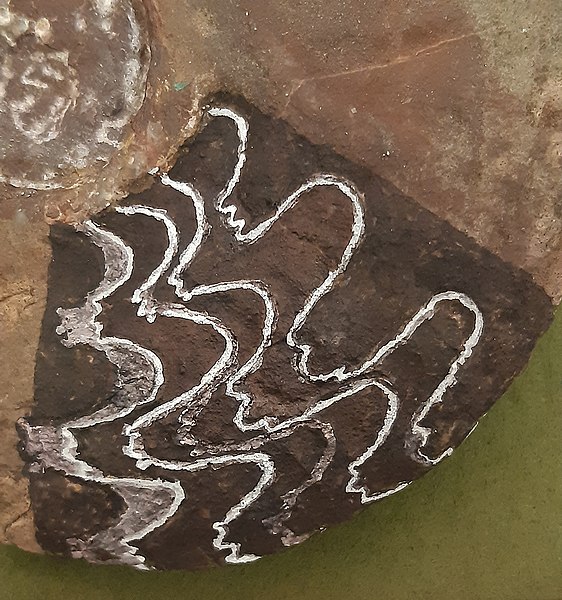Ammolite is an opal-like organic gemstone found primarily along the eastern slopes of the Rocky Mountains of North America. It is made of the fossilized shells of ammonites, which in turn are composed primarily of aragonite, the same mineral contained in nacre, with a microstructure inherited from the shell. It is one of few biogenic gemstones; others include amber and pearl.
In 1981, ammolite was given official gemstone status by the World Jewellery Confederation (CIBJO), the same year commercial mining of ammolite began. It was designated the official gemstone of the City of Lethbridge, Alberta in 2007.
Unprocessed sample of ammolite; a "dragon skin" pattern is apparent
An iridescent ammonite from Madagascar
Korite's mechanized mining operations are fairly basic, involving the excavation of shallow pits with backhoes.
Another view of Korite's open-pit mining operations in Alberta, Canada.
Ammonoids are extinct spiral shelled cephalopods comprising the subclass Ammonoidea. They are more closely related to living coleoids than they are to shelled nautiloids. The earliest ammonoids appeared during the Devonian, with the last species vanishing during or soon after the Cretaceous–Paleogene extinction event. They are often called ammonites, which is most frequently used for members of the order Ammonitida, the only living group of ammonoids from the Jurassic up until their extinction.
Ammonoidea
Ammonite clean cut
Goniatites plebeiformis showing Goniatitic suture
Protrachyceras pseudoarchelonus showing Ceratitic suture








